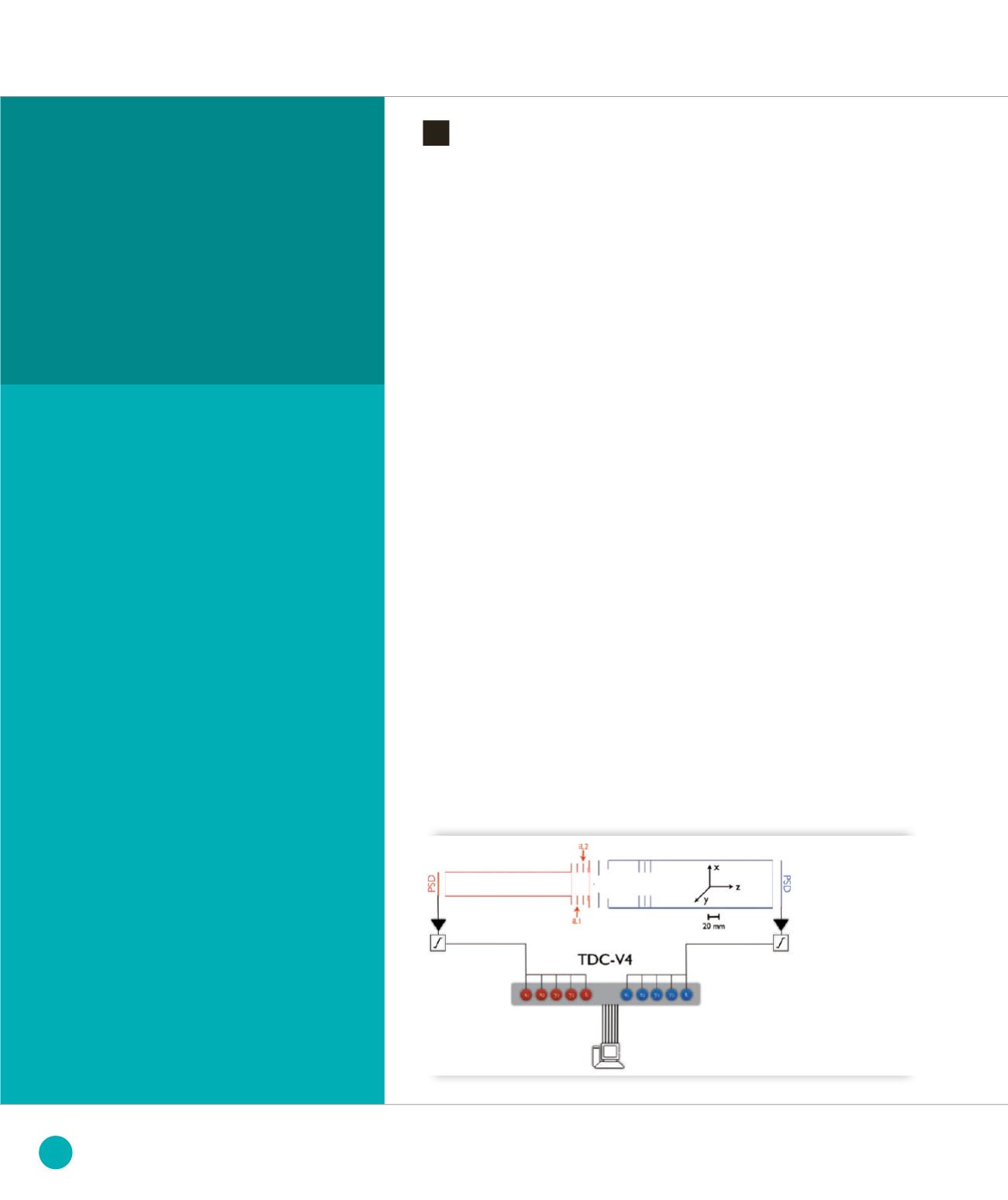
A new double charged
particle imaging
spectrometer for
gas phase VUV
photoionization studies
The electron/ion double coincidence imaging
spectrometer Delicious III, is the successful
continuation of our pioneering efforts
to couple the velocity map imaging (VMI)
technique to a synchrotron beamline,
to benefit from its high collection efficiency,
particle energy resolution and multiplex
capabilities. The new coincidence scheme
has been extended to include ion imaging
and now allows high quality photoelectron
images to be filtered as a function
of the cation mass, translational energy
and direction, which opens new avenues
of research in photochemistry or cluster
science.
At DESIRS, two permanent endstations are
available for external users, one of which,
the molecular beam chamber SAPHIRS, is
dedicated to valence-shell photoionization
processes in the gas phase on a large
variety of systems, from bare atoms
up to nanoparticles, spanning several
scientific fields. Thus, the endstation must
be extremely versatile while guaranteeing
a certain degree of specialization for
tailored individual needs, all in a user-
friendly manner and reliably.
To obtain a complete picture of the
photoionization event, we start by
dramatically reducing the number of initial
states available in the neutral through
the use of a molecular beam, where the
neutral’s internal energy is converted into
kinetic energy along the beam’s direction.
Then we study, with as much detail as
possible, the final state consisting of a
departing electron plus cation, and how
the initial energy deposited into the system
is shared and evolves among the different
degrees of freedom (electronic and nuclear
continua).
To achieve this goal in the most
comprehensive way, the spectrometer,
DELICIOUS III, is capable of separating
the different photoionization events in
time, so that an electron can be correlated
to a given ion coming from
the same
photoionization event, the so-called
PhotoElectron PhotoIon COincidence
scheme, or PEPICO. More precisely
the spectrometer, as shown in Figure
➊
,
is based upon a double imaging concept,
which yields the full cation velocity vector,
i.e., total kinetic energy and angles of
ejection, and correlates this information
with the photoelectron velocity mapped
images, so that the photoelectrons can
be filtered in ion mass, ion direction
and ion kinetic energy.
The multidimensional data delivered
by DELICIOUS III can be reduced in
many ways and will stimulate new
experimental research on photochemistry
or cluster science. As an example of
the performances, let us consider the
photoionization of N
2
above its dissociation
threshold, i.e., at a photon energy of 25.6
eV. The absorption of the photon produces
an electron and a N
2
+
cation with a wide
distribution of internal energies, depending
on the kinetic energy of the departing
photoelectron. If the amount of internal
energy is above the dissociation threshold,
the parent ion will break to give N +
N
+
. Figure
➋
shows the raw coincident
photoelectron and photoion images for
the N
2
+
and N
+
obtained after applying the
mass filter. The position and arrival times
of the particles are then extracted and
converted to velocity distributions to yield
the results displayed in Figure
➌
.
Delicious III has been conceived
in-house
at SOLEIL
, from the ray-tracing simulations
to the mechanical conception, and most
of the electronics have been custom-made
by nearby groups, perpetuating the know-
how within the Orsay/Saclay area.
➊
General principle of DELICIOUS III.
PSD=Position Sensitive Detectors
MODELING, METHODOLOGY AND INSTRUMENTATION
118
SOLEIL
HIGHLIGHTS
2013


